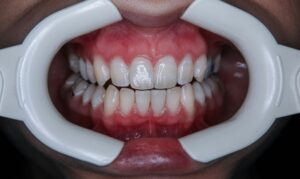For children with physical disabilities, ensuring that they receive adequate nutrition is vital not only for their growth and development but also for improving their overall quality of life. Children with physical disabilities often face unique challenges that can complicate the process of maintaining a healthy diet. These challenges may include difficulties with feeding, altered energy requirements, or problems with nutrient absorption. Proper nutritional management plays a crucial role in maintaining their physical health, supporting their mobility, and preventing complications like malnutrition or weight imbalances. In this article, we will explore 17 essential nutritional considerations for children with physical disabilities, highlighting the importance of tailored nutrition plans to meet their specific needs.
1. Understanding the Unique Nutritional Needs of Children with Disabilities
Children with physical disabilities may have significantly different nutritional requirements than their peers without disabilities. These differences stem from factors such as reduced mobility, altered metabolism, or the increased energy demands of managing their condition. For instance, some children may require additional calories to support muscle tone or manage spasticity, while others with reduced mobility may need fewer calories to avoid excessive weight gain. Additionally, some disabilities can affect a child’s ability to chew or swallow food, further complicating their ability to meet their nutritional needs. This creates a need for a customized nutrition plan that accounts for the child’s specific challenges and ensures they receive the right balance of nutrients for their growth and development.
2. Energy Needs and Caloric Intake
One of the most critical aspects of managing nutrition for children with physical disabilities is determining their appropriate caloric intake. Depending on the nature of their disability, children may have increased or decreased energy needs. For example, children with conditions like cerebral palsy may have higher caloric requirements due to involuntary muscle spasms or increased muscle tone, which results in more energy expenditure. On the other hand, children who have limited mobility or are primarily sedentary may require fewer calories to maintain a healthy weight. Accurately determining energy needs helps ensure that children receive enough calories to support their growth and prevent malnutrition, while also avoiding excessive caloric intake that could lead to overweight or obesity.
3. Adjusting Caloric Needs for Activity Levels
Children with reduced mobility or those who rely on wheelchairs may need fewer calories than more active children. However, it is equally important to consider any conditions that increase energy expenditure, such as spasticity or muscle tremors, which can significantly raise caloric needs. For children with high muscle tone, it may be necessary to increase caloric intake to prevent weight loss and ensure that their bodies have the energy they need for daily activities and therapies. Conversely, children who are less physically active may require careful monitoring of their caloric intake to avoid unnecessary weight gain, which can further complicate mobility and lead to other health issues.
4. Monitoring Weight Changes
Monitoring a child’s weight is essential for managing their overall health. Weight gain or loss that occurs too rapidly can indicate that their caloric intake is not properly aligned with their needs. Regular weight checks, in consultation with a healthcare provider, can help track these changes and adjust the diet accordingly. For instance, if a child is gaining weight too quickly, it may be necessary to reduce their caloric intake or re-evaluate the types of foods they are consuming. Similarly, if a child is not gaining weight as expected, this could be a sign that they need more calories or nutrient-dense foods to support their growth and energy needs.
5. Protein for Muscle Maintenance and Repair
Protein is a vital nutrient for all children, but it is especially important for those with physical disabilities, as it plays a crucial role in maintaining muscle mass and repairing damaged tissues. Many children with physical disabilities are at risk of muscle atrophy due to reduced mobility or limited use of certain muscles. Ensuring adequate protein intake helps prevent muscle loss and promotes strength, which is essential for improving mobility and reducing the risk of injury. Furthermore, children who undergo frequent physical therapy sessions or are engaged in activities to enhance their strength may have increased protein needs to support muscle repair after exertion.
6. Choosing High-Quality Protein Sources
When selecting protein sources for children with physical disabilities, it’s important to focus on foods that provide high-quality proteins with all the essential amino acids needed for muscle repair. Lean meats such as chicken, turkey, and fish are excellent choices, as they provide a complete source of protein with minimal unhealthy fats. Plant-based protein sources, such as legumes, beans, and tofu, are also valuable additions, especially for children with dietary restrictions or preferences. Dairy products, including milk, yogurt, and cheese, offer both protein and essential nutrients like calcium that support bone health, which is often a concern for children with physical disabilities.
7. Adjusting Protein Intake for Reduced Mobility
Children with limited mobility may not need as much protein as their more active peers, since their muscles may not be as heavily engaged. However, it’s still essential to ensure they receive enough protein to maintain their muscle mass and prevent further weakness. On the other hand, children who experience high levels of muscle spasticity or those involved in regular physical therapy may actually require increased protein to support the additional demands placed on their muscles. Careful planning of protein intake, based on the child’s physical condition and activity level, can help strike the right balance for maintaining optimal muscle health.
8. Hydration and Fluid Intake
Hydration is another critical aspect of nutrition that is often overlooked, particularly for children with physical disabilities. Adequate fluid intake is essential for maintaining proper digestion, preventing dehydration, and supporting the body’s overall function. Children with physical disabilities, particularly those with reduced mobility, may be at a higher risk of dehydration or constipation due to decreased physical activity and the effects of certain medications. Ensuring they drink enough fluids throughout the day is vital to maintaining their health and preventing complications.
9. Managing Fluid Intake for Swallowing Difficulties
Some children with physical disabilities may experience dysphagia, or difficulty swallowing, which can make staying hydrated more challenging. In such cases, fluids may need to be thickened to prevent choking or aspiration, a condition where fluids or food are inhaled into the lungs instead of being swallowed. It is important to work closely with a speech therapist or feeding specialist to develop a plan that ensures the child remains hydrated while minimizing the risk of choking. Specialized tools like thickening agents or adaptive cups can help children with swallowing difficulties safely consume the fluids they need.
10. Encouraging Hydration for Constipation Prevention
Children with reduced mobility are particularly prone to constipation, as inactivity can slow down digestive processes. Ensuring adequate water intake is one of the most effective ways to prevent constipation, as it helps keep stools soft and easier to pass. Along with increasing fluid consumption, caregivers can also encourage the consumption of fiber-rich foods to support digestive health. For children who have difficulty consuming enough water, offering fluids in different forms, such as flavored water, soups, or hydrating fruits like watermelon, can help meet their hydration needs.
11. Managing Nutrient Absorption Issues
Some children with physical disabilities may face challenges related to the absorption of nutrients, particularly if they have gastrointestinal disorders or take medications that interfere with digestion. Conditions like cystic fibrosis or gastrointestinal motility disorders can lead to malabsorption, where the body cannot properly absorb nutrients from food. This can result in nutrient deficiencies, even if the child is eating a well-balanced diet. Addressing malabsorption issues is essential to ensuring that children receive the full benefit of the foods they consume and can grow and thrive.
12. Addressing Malabsorption Issues
For children with malabsorption issues, specialized nutritional support may be required to ensure they receive adequate nutrients. In some cases, the child may need enzyme supplements to aid in digestion, or they may require nutrient-dense formulas if they are unable to absorb enough nutrients from regular foods. It is crucial to work closely with a dietitian or healthcare provider to assess the child’s nutrient needs and create a plan that addresses any gaps in their nutrition. Careful monitoring and regular blood tests may be necessary to identify and address any deficiencies early on.
13. Incorporating Digestive Enzymes
In certain conditions, such as pancreatic insufficiency, children may need to take digestive enzymes to help break down fats, proteins, and carbohydrates more effectively. These enzymes can improve nutrient absorption and help children meet their caloric and nutrient needs more efficiently. It’s important to follow a healthcare provider’s recommendations for enzyme use, as well as to adjust the child’s diet to support the use of these supplements.
14. Vitamin and Mineral Intake
Children with physical disabilities often require careful management of their vitamin and mineral intake to support their overall health. Specific vitamins and minerals are critical for various functions, including bone health, immune support, and neurological function. Children with limited mobility, in particular, may need additional calcium and vitamin D to support their bones and prevent conditions like osteopenia or osteoporosis.
15. Adequate Calcium and Vitamin D for Bone Health
Children who are less mobile or who use wheelchairs are at higher risk of developing bone density issues due to decreased weight-bearing activity. Ensuring they receive adequate amounts of calcium and vitamin D is essential for supporting their bone strength. Foods rich in calcium, such as dairy products, fortified plant milks, and leafy green vegetables, should be incorporated into their diet. In some cases, supplements may be necessary to meet their needs, especially if they are unable to consume enough calcium or vitamin D through food alone.
16. Ensuring Sufficient Iron Intake
Iron is another critical nutrient for children with physical disabilities, as iron deficiency anemia can affect energy levels and overall health. Children who have difficulty consuming iron-rich foods or who have gastrointestinal issues may
need extra support to ensure they are getting enough iron in their diet. Including iron-rich foods like red meat, fortified cereals, spinach, and legumes can help prevent anemia. Additionally, pairing iron-rich foods with vitamin C-rich foods, such as citrus fruits, can improve iron absorption.
17. Vitamin B12 and Folate for Neurological Health
Vitamin B12 and folate are important for maintaining healthy nerve function, and deficiencies in these nutrients can lead to neurological problems. Children who follow a restrictive diet or who have absorption issues may require supplementation to ensure they get enough B12 and folate. It is important to work with a healthcare provider to monitor these levels and adjust their intake as needed to support neurological development.
Conclusion
Proper nutrition is essential for promoting the overall well-being of children with physical disabilities. By focusing on their unique dietary needs, including adjusting caloric intake, managing hydration, ensuring sufficient vitamin and mineral intake, and addressing any absorption issues, caregivers can support these children in achieving optimal health. Each child is different, and their nutritional needs will vary depending on their specific condition, mobility level, and other factors. Working closely with healthcare professionals, including dietitians and pediatricians, is key to developing a tailored nutritional plan that supports their growth, development, and quality of life.




